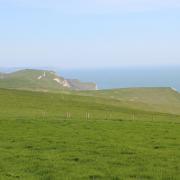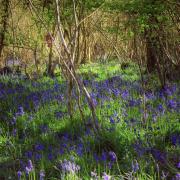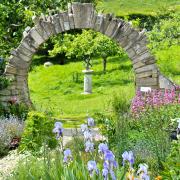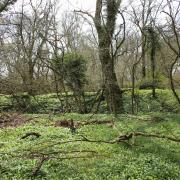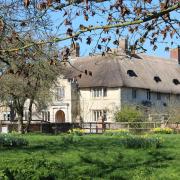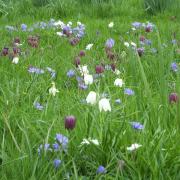Having reopened to visitors in March, Brownsea Island is buzzing with activity by April. This island nature reserve is a paradise for wildlife all year round, especially in spring.
The northern side of the island, managed by Dorset Wildlife Trust, offers a safe environment for sandwich terns to nest. The sheltered lagoon (pictured) escapes the extremes of weather associated with usual UK coastal conditions. It presents minimal threats from predators, and it is a stone’s throw from the sand eels and other small fish they feed their hungry chicks.
In summer, the lagoon islands are filled with nesting sandwich terns, breeding alongside common terns, gulls, common shelduck, oystercatchers and water rails. However, in 2023, an outbreak of avian flu led to the death of nearly 600 birds – mostly chicks - on Brownsea during the breeding season. The longer-term impact of this devastating loss remains to be seen and will be carefully monitored.
The support of Dorset Wildlife Trust members, supporters and volunteers is vital to ensure the future of this important habitat in Poole Harbour. Throughout the year, volunteers work hard to maintain Brownsea Island for all the species that live here. That might mean removing invasive species, creating nature-friendly fencing, or restoring and rebuilding the tern islands.
We also welcome community groups here as part of the Wild Brownsea project, funded by the National Lottery Heritage Fund. Individuals and community groups from all backgrounds are encouraged to visit and enjoy the island. Find out more about this project at dorsetwildlifetrust.org.uk/wildbrownsea

The Alleluia Flower
April and May are the best times to spot wood sorrel. Look in woodland and beneath shady hedgerows, it’s easy to identify thanks to its characteristic trefoil leaves (reminiscent of clover) and delicate white flowers, veined with purple. Both the leaves and flowers fold up as night falls, unfurling again as the sun rises. Wood sorrel often grows from the moss found on fallen logs. Its habit of blooming around Easter gave rise to its popular European name of 'alleluia'.

Breeding Newts
Newts will be ‘courting’ in garden ponds now, looking for plants to lay their eggs on. Those living in gardens are probably smooth newts, identifiable by their orange belly, grey-brown bodies, and neat black spots (pictured). Help the next generation by adding plants such as water forget-me-not and brooklime to your pond as the newts fold the leaves around the eggs to protect them. Submerged plants such as native hornwort are great oxygenators and provide shelter for tadpoles and dragonfly larvae.

A Dorset Shark
The small-spotted catshark (pictured) is the most common shark in UK seas. It has often been seen by divers around Chesil Beach and Swanage Pier and is commonly found throughout Dorset’s coastal waters. Growing to around one metre in length, they have rough, pale-cream skin, with small black spots and large, dark cat-like eyes. You are probably more familiar with their empty egg cases, known as mermaid’s purses, which can be found washed up on shorelines across the county.




